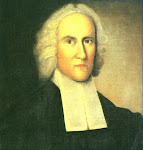For several decades some scholars have argued that the ancient Hebrew religion evolved from the myths of other peoples and bears important resemblances to those myths. In his new book entitled The Bible among the Myths (Zondervan Publishing House, 2009), however, Old Testament scholar John Oswalt demolishes these contentions. Oswalt convincingly shows that the beliefs of the Israelites, enshrined in Scripture, are so antithetical to the myths of the ancient peoples around them, the Hebrew religion and the ancient myths cannot have anything like a common source. The main difference is that while the ancient myths are all pantheistic, the Bible speaks of God as utterly transcendent, that is, as completely Other from his creation. Oswalt frames his essential conclusion in these important words:
In mythical thinking God is the cosmos—or, to put it the other way around, the cosmos is God. The Source and the Manifestation are finally indistinguishable. As we saw in the previous chapter, all the distinctive features of mythical thought flow form this principal, the principal we call continuity.
In the same way all of the Bible’s understandings stem from one ruling principle: it is the principle of transcendence. For the Bible, God is not the cosmos, and the cosmos is not God. God is radically other than his creation. This thought undergirds everything the Bible says about reality. From start to finish, the Bible adamantly resists the principle of continuity. God and the divine realm are not in any way a part of this world. He is everywhere present in the world, be He is not the world, and the world is not Him. He is other than the world; He is separate from it; it does not proceed from him as a somewhat blurred reflection; it is a creation that, by his permission, has a distinct existence of its own.
Oswalt, The Bible among the Myths, p. 81 (emphasis in original).

No comments:
Post a Comment